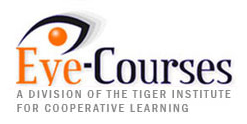Optics Formulas

Course Overview
This
course is designed to teach and reinforce the many optics formulas that
ophthalmic techs may need to know for certification exams and clinical
issues. This course JCAHPO approved.
This course is intended for intermediate and advanced levels and offers
numerous optics formulas with example problems and practice problems
with an answer key. The optics formulas covered in this course are an
absolute necessity for those taking the COT and COMT certification
exams.
After completing this course the student will be able to:
-
Identify
Prentice’s Rule, know when to use it, know how to use it to solve
problems dealing with induced prism and lens decentering -
Identify and understand Snell’s law regarding index of refraction
-
Find out how much image displacement exists when looking through a prism of a certain amount
-
List and define the different types of lenses: converging, diverging, spherical, astigmatic or cylindrical
-
Describe the relationship between radius of curvature and lens steepness
-
Calculate the focal point of a lens or calculate the power of a lens with a known focal point
-
Calculate
where an image will be formed given a known lens power and object
distance from lens, or calculate the lens power given known image
placement and object placement -
Calculate the sphere cylinder equivalent for prescriptions in plus cylinder and minus cylinder form
-
Transpose prescriptions from plus cylinder to minus cylinder form and vice versa
-
Understand and describe refractive states of myopia, hyperopia, emmetropia, and astigmatism
-
Calculate the far point of accommodation for an eye
-
Understand the types of astigmatism- simple myopic, compound myopic, simple hyperopic, compound hyperopic, mixed
-
Draw optical crosses for both spherical and astigmatic prescriptions
-
Use Prentice’s rule with optical crosses to find induced prism in astigmatic prescriptions
-
Calculate amplitude of accommodation, near point, far point, or refractive error given the other 2 values
-
Calculate
total prism effect OU when given prism amounts for OD and OS-
understand how prism in each eye affects total prism amounts
Here is what some ophthalmic personnel who took this course had to say:
“well presented!” T.A., COMT
“Great help on explaining the many formulas, clearly explained with understandable examples- very helpful!” L.C., COMT
.
This course should take approximately two hours to complete.
Upon
completion of this section the student will take a post-test that will
test his/her knowledge of the items mentioned above. You must correctly
answer at least 18 of the 22 questions on the open book post test to
earn credit. If you do not successfully pass the post test the first
time you may try again at no expense to you.
